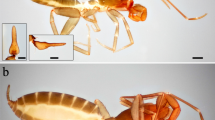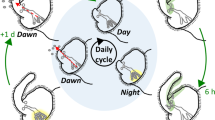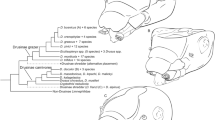Abstract
THERE is a considerable variation in the morphology of the flagella in the lower plant groups and in the flagellates. The flagellar structures have been used as systematic characters since the pioneering work of Petersen1 and Vlk2. The following five types of flagella are recognized: (1) One-sided flimmer flagella which have one row of hair-like appendages (called flimmer hairs or mastigonemata or, somewhat misleadingly, cilia). The flimmer hairs are about 3µ long, and the row extends along the entire length of the flagellum on its one side. (2) Two-sided flimmer flagella which have two rows of flimmer hairs along the entire length of the flagellum. (3) Whip flimmer flagella which have a demarcated thin end region devoid of flimmer hairs and a main region which possesses two rows of flimmer hairs. The flimmer hairs stand perpendicular to the flagellar axis. (4) Whip flagella which are devoid of flimmer hairs but have a demarcated thin end region. These flagella are also called lash flagella. (5) Flagella which lack flimmer hairs and also lack a demarcated end region visible in the light microscope.
This is a preview of subscription content, access via your institution
Access options
Subscribe to this journal
Receive 51 print issues and online access
$199.00 per year
only $3.90 per issue
Buy this article
- Purchase on Springer Link
- Instant access to full article PDF
Prices may be subject to local taxes which are calculated during checkout
Similar content being viewed by others
References
Petersen, J. B., Botan. Tidskrift (Copenhagen), 40, 373 (1929).
Vlk, W., Arch. Protistenkunde, 90, 448 (1938).
Manton, I., Symp. Soc. Exp. Biol., 6, 306 (1952).
Pitelka, D. R., and Schooley, C. M., Univ. Calif. (Berkeley) Publ. Zool., 61, 79 (1955).
Hollande, A., in Grassé, P.-P. (edit.), Traité de Zoologie, 1, 579 (1952).
de Saedeleer, H., Ann. Soc. Roy. Zool. Belg., 60, 16 (1929).
Afzelius, B. A., in Goodwin, T. W., and Lindberg, O. (edit.), Macromolecular Structure and Biological Function, Proc. First Symp. IUB/IUBS (in the press).
Fjerdingstad, E. J., Z. Zellforsch., 53, 645 (1961).
Gatenby, J. B., and Tahmisian, T. N., J. Roy. Micro. Soc., 77, 100 (1958).
Rasmont, R., Ann. Sci. Nat. Zool., 12, 253 (1959).
Kilian, E. F., Ber. Oberhessische Ges. Natur-Heilk., Giessen, 27, 85 (1954).
Author information
Authors and Affiliations
Rights and permissions
About this article
Cite this article
AFZELIUS, B. Flimmer-flagellum of the Sponge. Nature 191, 1318–1319 (1961). https://doi.org/10.1038/1911318b0
Issue Date:
DOI: https://doi.org/10.1038/1911318b0
This article is cited by
-
Sponge spicules as blueprints for the biofabrication of inorganic–organic composites and biomaterials
Applied Microbiology and Biotechnology (2009)
-
Zwei neue Formen von Cyrtocyten. Vergleich der bisher bekannten Cyrtocyten und Er�rterung des Begriffes ?Zelltyp?
Zeitschrift f�r Zellforschung und Mikroskopische Anatomie (1962)
Comments
By submitting a comment you agree to abide by our Terms and Community Guidelines. If you find something abusive or that does not comply with our terms or guidelines please flag it as inappropriate.



